Green energy for autism care centers
Harnessing Renewable Energy in Autism Support Facilities
Introduction: A Sustainable Approach
Incorporating green energy solutions into autism care centers presents an opportunity to address both financial challenges and environmental concerns. Families and facilities dedicated to autism care often face high operational costs and energy demands, which can be alleviated through the adoption of renewable energy sources. This not only contributes to cost savings but also fosters a healthier, more sustainable environment that supports the well-being and therapeutic needs of individuals with autism.
The Dual Benefits of Green Energy Solutions
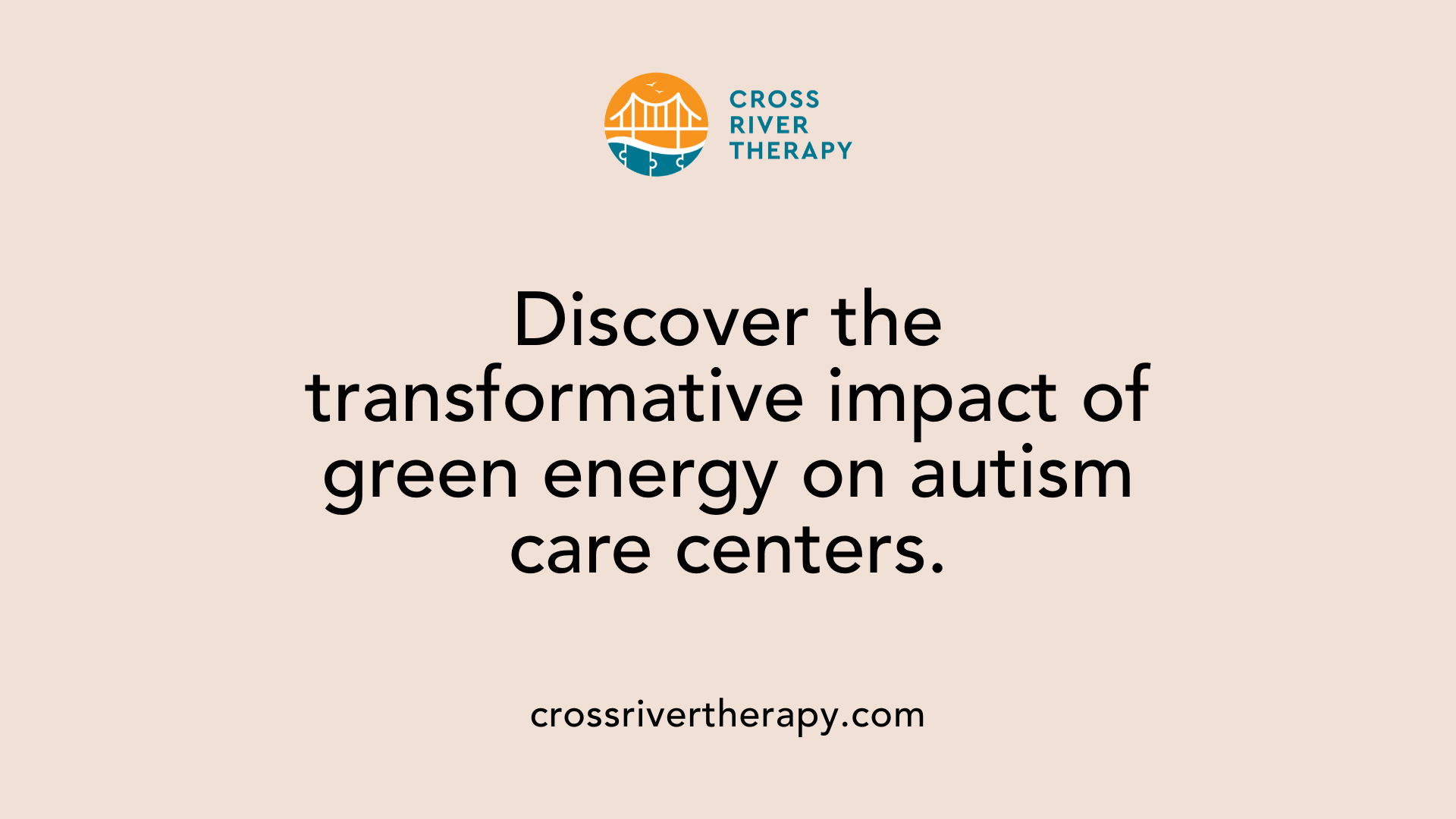
What are the benefits of green energy solutions in autism care centers?
Green energy solutions in autism care centers offer numerous advantages. Firstly, they significantly reduce carbon emissions, contributing to a healthier environment. Improved air quality directly benefits individuals with autism, as poor air quality has been linked to cognitive and behavioral issues. By utilizing renewable resources like solar and wind, these centers can foster a more therapeutic atmosphere.
The transition to green energy creates not just a calming environment but also enhances the overall patient experience. Facilities that implement renewable energy sources report reduced utility costs. This means more funds can be redirected towards critical care services and innovative therapies.
Additionally, green energy promotes community resilience. Centers that rely on sustainable energy are better equipped to maintain operations during disruptions, creating a stable environment for those they serve. Moreover, the commitment to sustainability tends to attract environmentally-minded staff who share these values.
In summary, integrating green energy in autism care centers not only aligns with public health objectives but also enriches the quality of care provided.
Enhancing Operational Efficiency and Well-Being
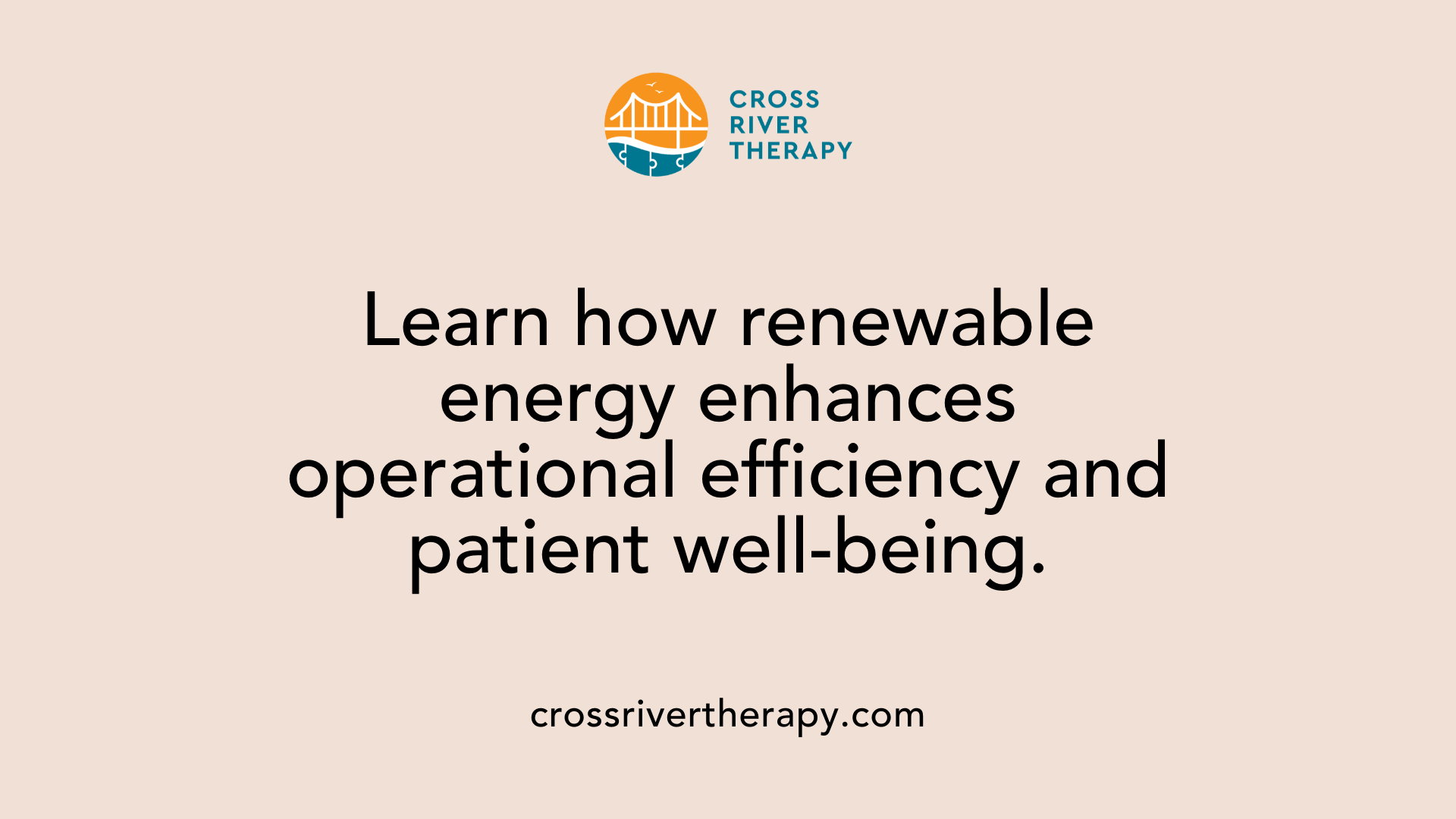
What is the impact of green energy on operational efficiency and overall well-being in autism support environments?
Green energy significantly enhances operational efficiency and overall well-being in autism support environments by reducing energy costs and increasing resilience against disruptions. Utilizing renewable energy sources like solar and wind power enables facilities to lower their operational costs, which is crucial given the high energy consumption associated with healthcare settings.
Transitioning to cleaner energy not only reduces reliance on fossil fuels but also improves indoor air quality—an essential factor for the health of individuals with autism. A better environment contributes to a calming atmosphere, which can lead to improved focus and reduced anxiety for those sensitive to their surroundings.
Additionally, the shift to renewable energy can help autism support organizations position themselves as community leaders in sustainability. Such a reputation can attract talent, funding, and collaboration opportunities, further enhancing service quality. This commitment to sustainability aligns with broader public health goals, effectively mitigating health risks linked to pollution and climate change while benefiting families managing autism.
Investments in green energy solutions create a sustainable path forward, ultimately supporting both environmental stewardship and the well-being of autistic individuals.
Strategies for Sustainable Energy Implementation
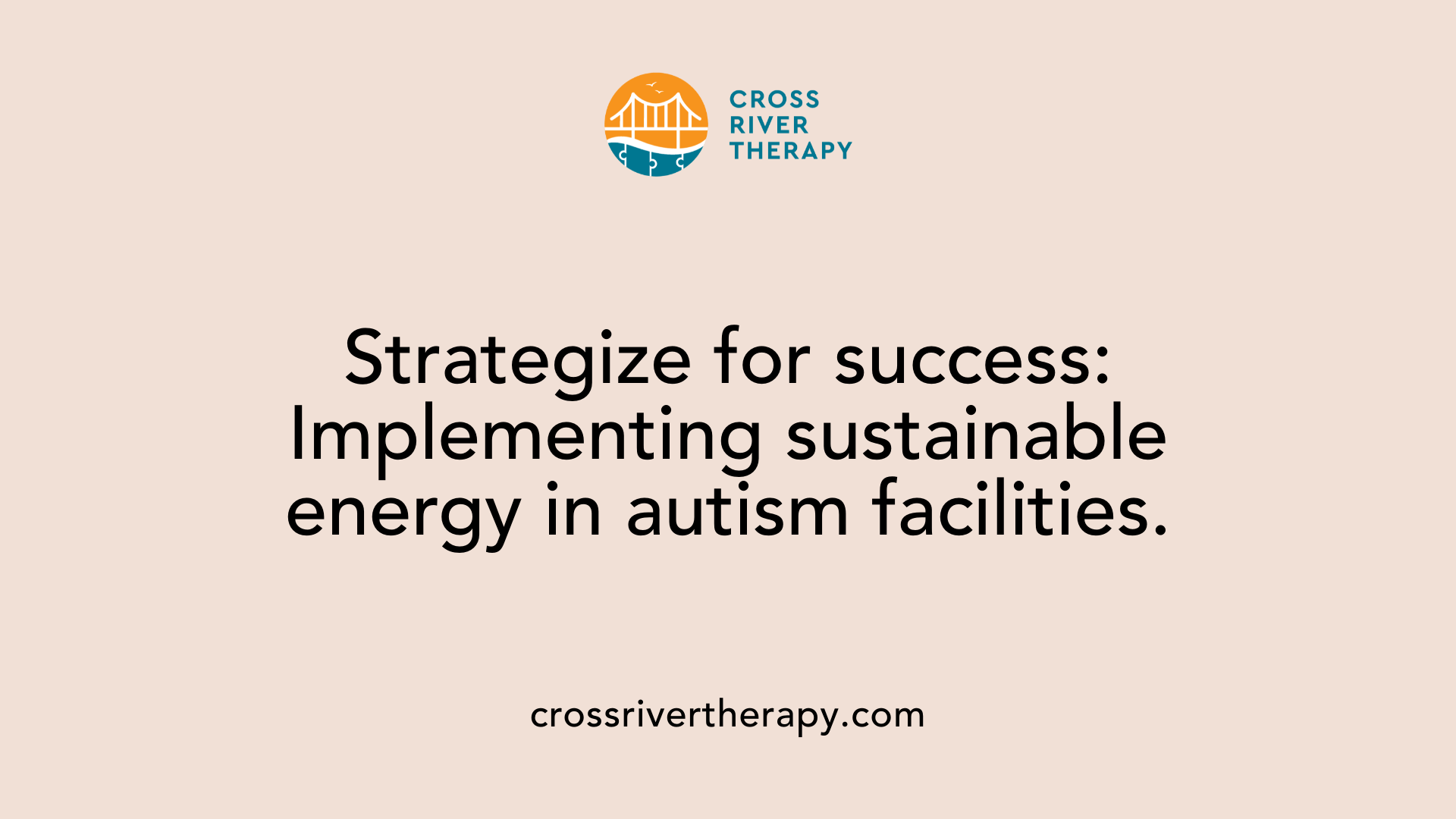
How can sustainable energy be implemented in autism support facilities?
Implementing sustainable energy in autism support facilities can significantly enhance operational efficiency while promoting a healthier environment for both staff and patients. The process begins with a thorough assessment of energy needs, allowing organizations to identify opportunities for improvement and allocate resources effectively.
Renewable energy sources
Facilities can integrate renewable energy sources such as solar panels, wind turbines, and geothermal systems. These alternatives help reduce reliance on fossil fuels and can lead to substantial cost savings over time. For example, solar power not only lowers electricity bills but also contributes to a cleaner environment, benefiting individuals with autism who may be sensitive to pollution.
Energy-efficient practices
In addition to renewable sources, the adoption of energy-efficient practices is crucial. This can include installing LED lighting, high-efficiency HVAC systems, and smart thermostats to optimize energy consumption. Improving indoor air quality and maintaining comfortable temperatures can greatly impact patient care and satisfaction. Facilities might also consider updating their appliances to energy-efficient models to further cut costs and enhance sustainability.
Establishing a culture of sustainability within autism care centers encourages staff and stakeholders to engage in eco-friendly practices, ultimately supporting broader environmental goals. While the initial investment can be significant, the long-term savings and improved health outcomes for individuals with autism make this transition a worthwhile endeavor.
Exploring Renewable Energy Options
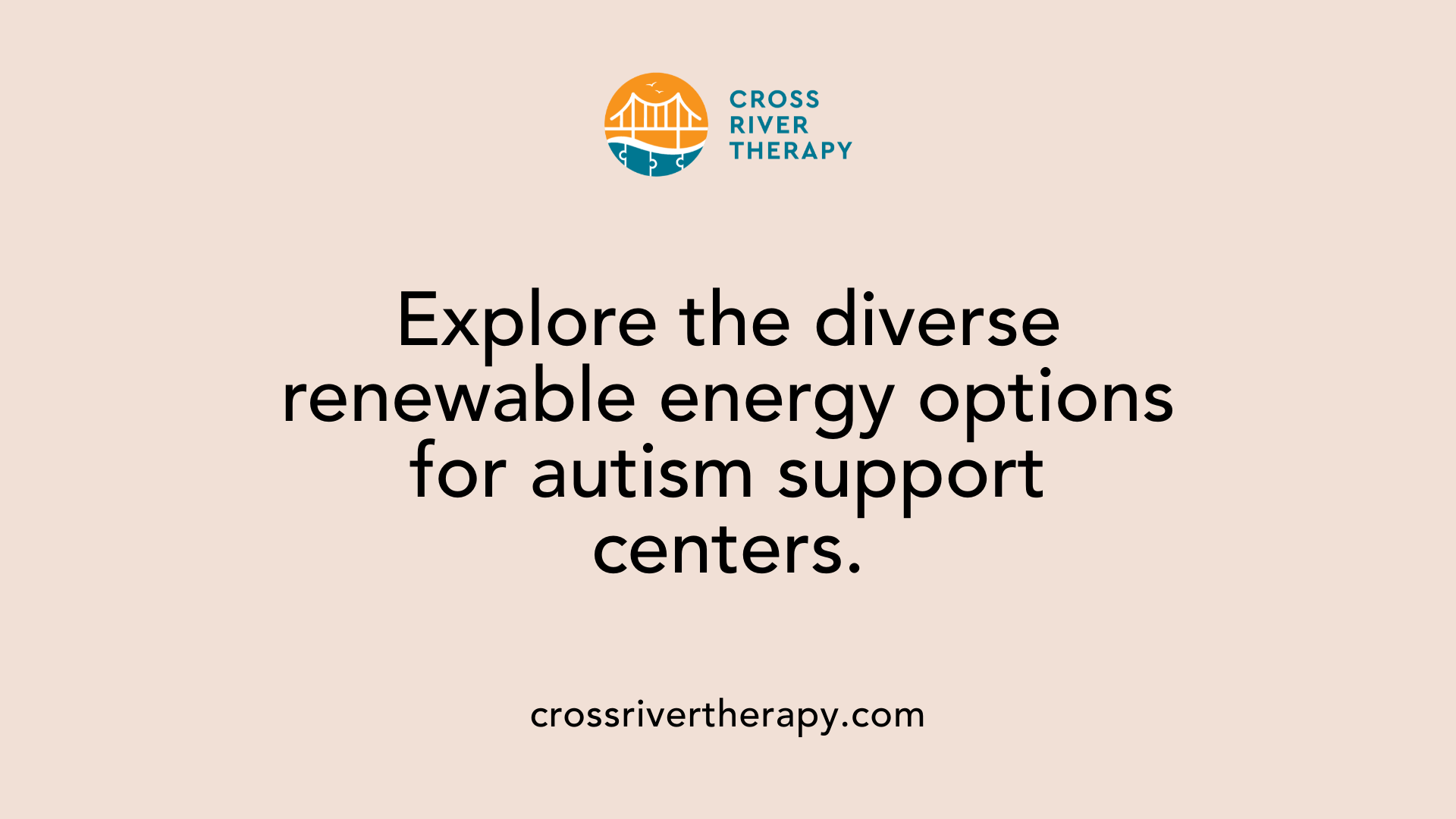
What are the different renewable energy options available for autism support centers?
Renewable energy choices for autism support centers are diverse and can significantly impact operational costs and environmental sustainability. Here are some primary options:
| Type of Energy | Description | Benefits |
|---|---|---|
| Solar Power | Utilizes solar panels to generate electricity. | Scalable, decreasing costs, significant savings. |
| Wind Power | Involves wind turbines to harness wind energy. | Offers cost reductions over time, no emissions. |
| Geothermal | Employs the earth’s stable temperatures for heating and cooling. | Efficient for temperature control, potential long-term savings. |
| Biomass | Converts organic materials into energy. | Renewable source, can reduce waste disposal. |
| Biogas | Generates energy from organic waste decomposition. | Useful for managing waste and producing energy. |
| Hydroelectric | Harnesses water flow to produce electricity. | Sustainable clean energy but dependent on location. |
Solar energy stands out for its scalability and decreasing costs, particularly beneficial for autism support centers looking to lower operational expenses. Wind energy also contributes significantly to cost savings and stability.
Integrating these renewable sources enhances the sustainability of autism centers, fostering a healthier environment and promoting resilience while alleviating some financial burdens for families. By tailoring these solutions to the unique needs of autism support centers, we can create more supportive and cost-effective care environments.
Financial Viability and Cost Savings
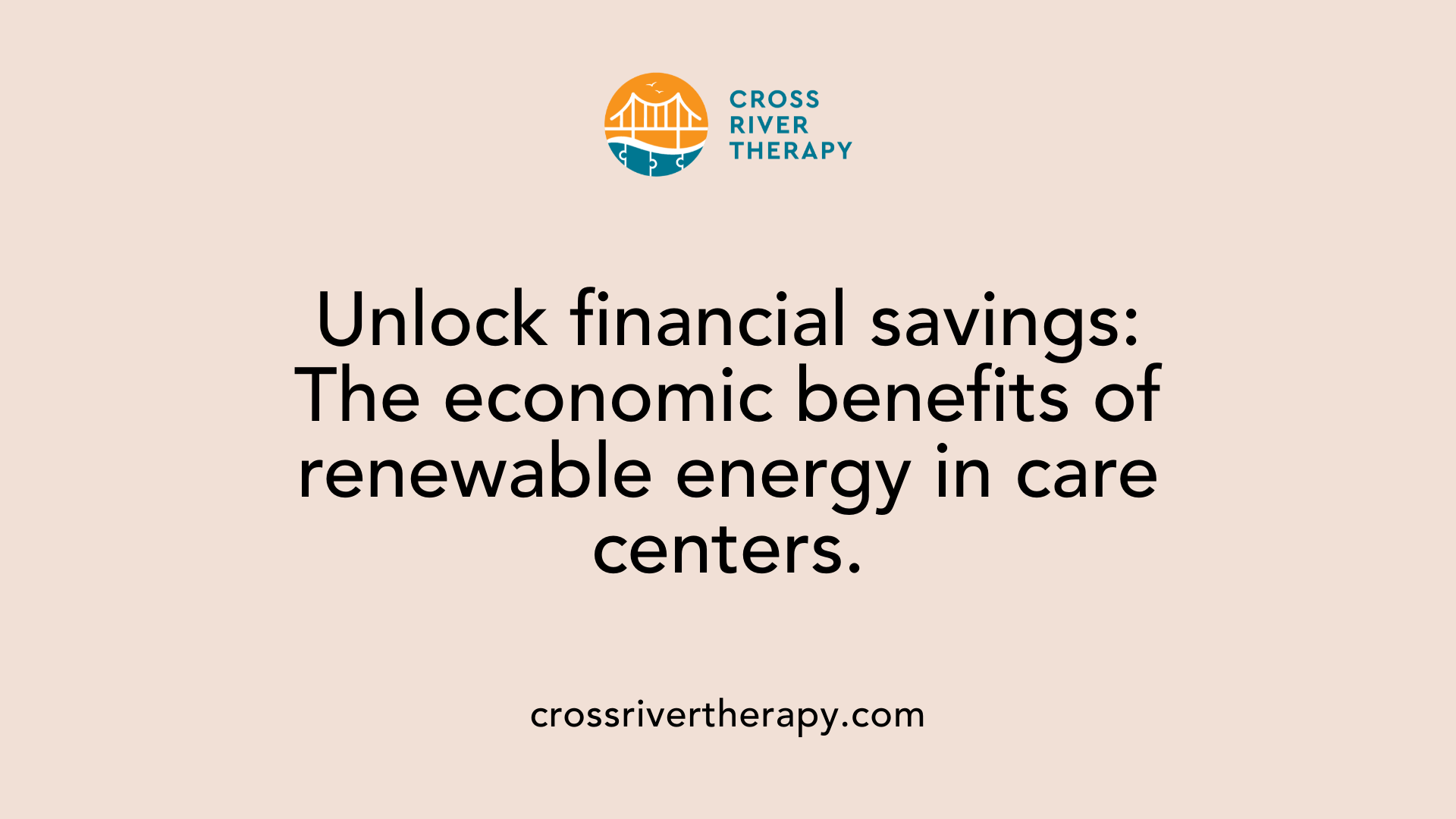
What are the financial implications and potential cost savings of using renewable energy sources in autism centers?
Switching to renewable energy sources in autism centers can lead to significant financial implications and potential cost savings over time. These centers often face high utility expenses, making operational costs a concern.
Implementing renewable systems such as solar, wind, or biomass can notably reduce these costs. For instance, solar power alone can diminish electricity bills substantially, directing the savings toward essential services and therapies for autistic individuals.
Incentives and Save Opportunities
While concerns about initial capital investment exist, government incentives, tax credits, and grants can significantly offset these expenses. Programs like those offered in Georgia and Pennsylvania illustrate that families can achieve substantial savings in energy bills after adopting renewable resources.
Moreover, energy-efficient solutions such as LED lighting and smart thermostats further decrease energy consumption, enhancing overall operational efficiency.
Summary of Financial Benefits
| Aspect | Benefits | Potential Savings |
|---|---|---|
| Renewable Energy | Reduces utility costs for direct funding reallocations | Significant |
| Incentives | Tax credits and grants lower initial costs | Varies by state |
| Energy Efficiency | Decreases energy waste & operating costs | Annual savings >$40,000 |
By integrating renewable energy, autism centers not only alleviate their financial burdens but also foster sustainability and support community health efforts.
Funding and Financial Assistance Programs
What funding opportunities and financial assistance programs are available for integrating renewable energy into autism centers?
There are numerous funding opportunities and financial assistance programs available that can facilitate the integration of renewable energy in autism centers. For instance, the U.S. Department of Energy’s Office of Energy Efficiency and Renewable Energy (EERE) offers various grants and technical assistance aimed at energy projects that align with sustainability goals.
The Small Business Innovation Research (SBIR) and Small Business Technology Transfer (STTR) programs specifically provide funding for small businesses within the energy sector, which may include renewable projects in autism support facilities.
Another notable resource is the Rural Energy for America Program (REAP), which provides grants and guaranteed loans for adopting renewable energy systems or improving energy efficiency. This program can cover up to 75% of eligible project's costs.
Additionally, the USDA offers support through the Farm Bill, which includes financial assistance for energy conservation projects. The Environmental Quality Incentives Program (EQIP) could potentially cover up to 90% of costs for eligible producers implementing sustainable technologies.
Grants are also available to assist with feasibility studies, energy audits, and innovative conservation projects. All these resources collectively create an encouraging landscape for autism centers to transition towards renewable energy solutions, ultimately aiding in alleviating financial burdens for families in need.
Therapeutic and Environmental Advantages
What are the therapeutic benefits and environmental advantages of eco-friendly energy practices for individuals with autism?
Eco-friendly energy practices provide a range of therapeutic benefits for individuals with autism. One significant advantage is improved air quality. Clean energy solutions reduce air pollution levels, which can alleviate sensory overload and anxiety commonly experienced by autistic individuals. Enhanced air quality supports overall mental health, decreasing respiratory issues that can lead to increased healthcare costs linked to pollution.
Furthermore, the reliability of affordable renewable energy can significantly reduce stress for families. Many families face financial strains when managing care for autistic children; thus, lower utility bills can redirect funds towards therapies and support services that foster wellbeing.
Additionally, adopting sustainable practices contributes to environmental sustainability by lowering greenhouse gas emissions. This not only results in cleaner air but also promotes the overall health of communities.
Furthermore, the renewable energy sector creates green jobs, which can help enhance economic stability and contribute to social opportunities, ultimately improving the quality of life for individuals with autism.
Successful Case Studies in Green Energy
Are there any case studies or examples of successful green energy implementations in autism facilities?
There are several promising case studies showcasing successful green energy implementations within autism facilities, revealing substantial benefits for both operational efficiency and environmental impact. For instance, facilities that have integrated renewable energy sources—such as solar, wind, and geothermal—often realize operational cost reductions of 20-30% on energy bills. This significant saving can free up funds for essential services and therapies for autistic individuals.
Moreover, these facilities typically focus on creating optimal learning environments tailored to the sensory needs of students. They often employ strategies such as:
- Natural Lighting: Enhances mood and reduces anxiety.
- Sound-Absorbing Materials: Minimizes distractions, creating calming spaces.
- Air Quality Improvements: Reduces respiratory issues and discomfort caused by environmental pollutants.
The transition to renewable energy also contributes to environmental health, with facilities reporting a reduction in greenhouse gas emissions by 10-20 tons annually. These outcomes illustrate how green energy advancements not only support sustainability goals but also enrich the living experiences for individuals on the autism spectrum. Overall, the successful case studies affirm that the integration of renewable energy is a significant step towards enhanced well-being in autism support centers.
Community and Educational Initiatives
How can community involvement and educational initiatives promote sustainability in autism care facilities?
Community involvement and educational initiatives are vital for fostering sustainability in autism care facilities. By actively engaging local stakeholders—including families, educators, and service providers—centers can create partnerships that promote collaboration and shared decision-making. This approach respects the unique needs of the community, leading to customized sustainability practices that enhance both support and commitment.
Educational programs play an essential role in this framework. They equip staff and clients with knowledge about sustainable practices, helping to cultivate a culture of environmental stewardship. For instance, workshops on renewable energy technologies can empower participants to make informed decisions and implement energy-efficient solutions in their daily operations.
Furthermore, incorporating feedback from community members can illuminate local priorities, resulting in impactful and culturally sensitive sustainability measures. When stakeholders feel their voices are heard, it fosters trust and strengthens commitment to shared economic benefits. All of these efforts contribute to not only reducing operational costs but also creating healthier environments for individuals with autism.
Summary of Benefits
| Benefit | Description | Impact on Community |
|---|---|---|
| Stakeholder Engagement | Collaboration among families and care facilities | Customized practices that resonate with community needs |
| Educational Programs | Knowledge-sharing about sustainability and technology | Empowerment of participants to implement eco-friendly initiatives |
| Community Feedback | Incorporates local priorities into sustainability measures | Builds trust and commitment to shared goals |
Ultimately, a collaborative approach to sustainability in autism care facilities can lead to better outcomes for both individuals with autism and the broader community.
Conclusion: A Path Forward
Green energy in autism care centers is not merely a trendy initiative; it represents a comprehensive strategy to better align financial sustainability with environmental responsibility. By reducing operational costs and carbon footprints, these facilities can devote more resources to enhancing care and educational programs while supporting broader community health. As more autism centers transition to renewable energy, they set important precedents for others seeking similar benefits. The collective efforts of stakeholders, engaged communities, and informed policy will ultimately pave the way for a sustainable future, ensuring that the needs of individuals with autism are met in a holistic and environmentally conscious manner.
References
Table of Contents
- The Dual Benefits of Green Energy Solutions
- Enhancing Operational Efficiency and Well-Being
- Strategies for Sustainable Energy Implementation
- Exploring Renewable Energy Options
- Financial Viability and Cost Savings
- Funding and Financial Assistance Programs
- Therapeutic and Environmental Advantages
- Successful Case Studies in Green Energy
- Community and Educational Initiatives
- Conclusion: A Path Forward
- References



